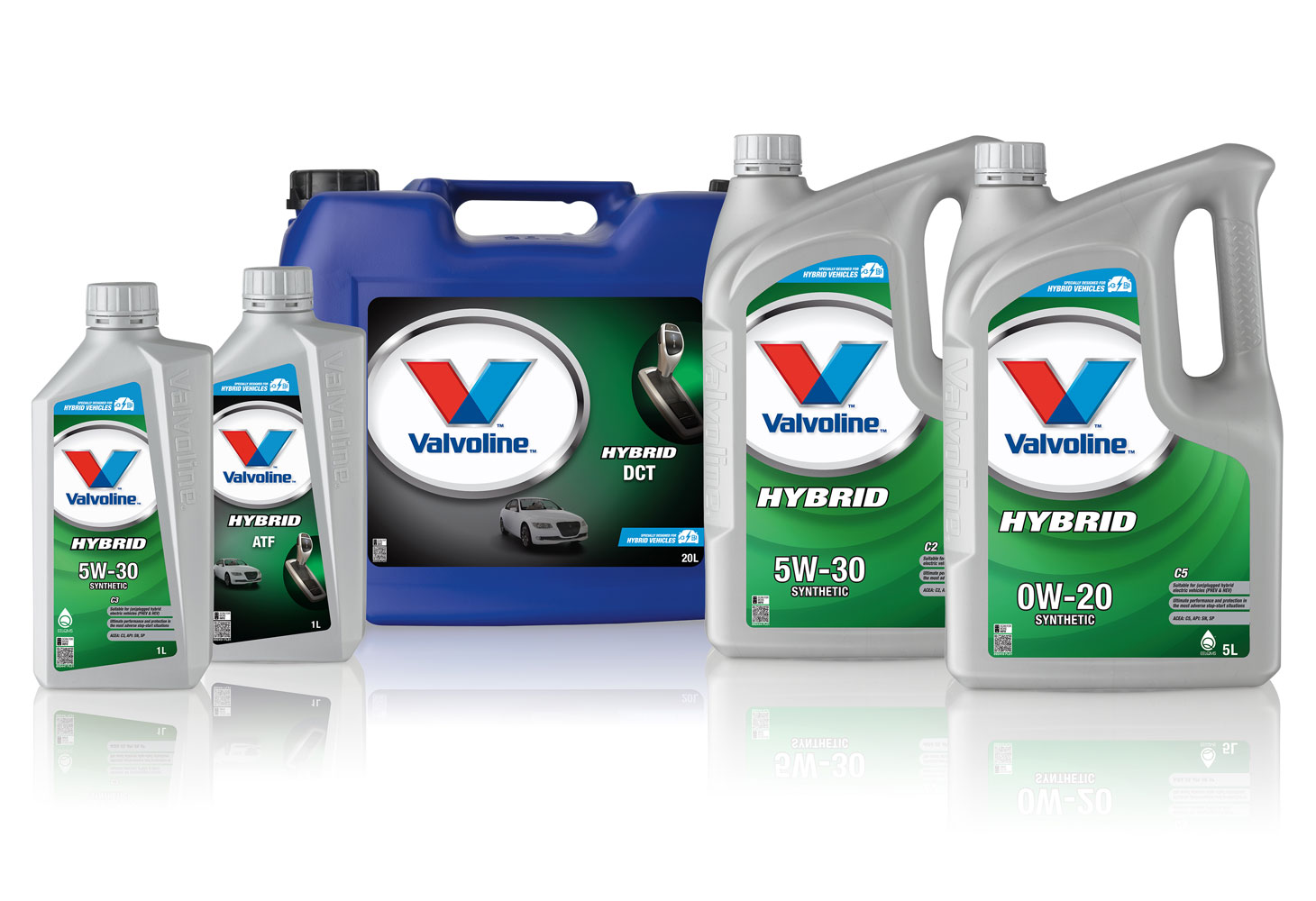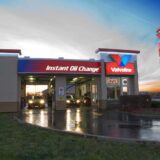
On the Road to Change – How advancements in vehicle and hybrid technology are driving innovation in the aftermarket lubrication market
Sponsored Content
By Valvoline Inc. (NYSE: VVV), a leading worldwide supplier of premium branded lubricants and automotive services.
In this article, Diego Brodoni, Vice President of Valvoline™ Europe explains the current state of play in the European aftermarket lubrication business. He explains that changes in engine technology are stimulating the aftermarket sector and providing an impetus for innovation.
From here, his colleague Mario Montuori, Regional Technical Manager Valvoline Europe, picks up the story and takes an in-depth look into one specific example of these changes in motoring; the challenges posed by the specific operating conditions of hybrid electrical vehicle technology – and Valvoline’s solution: Intelligent Fluid Technology.
Where is the aftermarket lubrication business right now?

Diego: Overall, things for the industry and for Valvoline, are going well at this time. You do not see the challenges experienced in the upstream part of the industry at the consumer end of the market. The audience for aftermarket lubrication products is changing – and growing – at the moment.
In the last few decades, a lot has been changing in engine technology. This is largely the result of demands for increased fuel efficiency and lower emissions, at the same time as the increasing of power and performance.
This has increased the use of different technologies such as gasoline direct injection (GDI) engines and hybrid systems – solutions aiming to strike the all-important balance between efficiency and performance.
Although these advances have increased efficiency, they also increase the possibility of engine problems. Take the GDI engines as an example. Broadly speaking, these engines are around 50% smaller, 65% more powerful and 43% more fuel efficient than a typical engine just a few years back.
Delivering greater horse power to a smaller engine can lead to higher temperatures and pressure inside the engine, which can cause a whole range of problems, including ultimately loss of both the fuel economy and performance that they were created for in the first place.
In such cases, there is a need for innovative, intelligent solutions tailored to the increased complexity and uniqueness of the situation.
At the same time, the prices associated with purchasing such vehicles is coming down. The first generation of this technology is now entering the secondhand market. There are also lower taxes associated with ownership of efficient, lighter engines. All of which are factors that are widening access to this type of vehicle and driving demand for suitable aftermarket products.
Another example is to be found in the increasing use of hybrid vehicles, where the novel operating conditions experienced also demand an innovative aftermarket solution.
Can you explain more about the market’s need for hybrid specific products and your decision to develop a range to fulfil them?

Mario: Currently, electric vehicles, including hybrids, represent only small, single digit numbers of total number of vehicles on the road in Europe. But this is changing. Data demonstrates that hybrid electric vehicles have doubled to nearly 12% of new vehicle sales. New regulations are one factor – Sustainability is high on the political agenda internationally and hybrid vehicles have a role to play, offering a route to significantly reduced CO2.
Another factor is the wider availability and increasing range of products on the market. All things considered, the presence of electric and hybrid vehicles is anticipated to increase to at least 20% of the total by the end of the current decade.
This increase will certainly have implications for aftermarket products – resulting in a decline in demand for products aimed at conventional vehicle technology and a rise in demand for solutions tailored to these electrical and hybrid technologies.
If I were to explain Valvoline to someone in the most simple, succinct way I would say that we are committed to client satisfaction through innovation. So, given the rising popularity of hybrid vehicles, I think it would be unusual if we did not develop an intelligent solution to help customers to take optimal care of their cars.
How much market/consumer involvement was there behind the decision to develop this product range?
Mario: For us, having realised that drivers were increasingly looking for hybrid vehicles, it was very important to gain a comprehensive understanding of the technologies involved in the various models of such vehicles in our European marketplace. To achieve this, we undertook in-depth research that, ultimately, was to cover 70% of the total hybrid vehicle parc and 90% of Asian models’ vehicle parc (which is leading the hybrid parc) in Europe.
As a result of this, before we even began with our product development, we had a clear picture both of what would appeal to the customer as well as the technical requirements of a high quality, intelligent lubricant range dedicated to hybrid vehicles and the novel operating conditions they present.
What are the unique challenges to a lubricant presented by a hybrid vehicle?
Mario: There are several challenges for a lubricant in a hybrid vehicle. Unlike in a conventional vehicle, the combustion engine switches off whenever possible in order to run on electric power, reducing fuel consumption and emissions. This stop-start cycle places pressure on the vehicle and lubricant alike.
For one thing, with the increased levels of inactivity, it’s possible the lubricant will not reach its optimal operating temperature – thereby losing its ability to ensure performance and protection. At the same time, the engine does not become warm enough to boil off any water that is condensed in the oil. There is a resultant risk of increased sludge accumulation as well as corrosion, oxidation and engine wear.
A further challenge lies in the hybrid vehicle’s use of an electric motor to drive the transmission. This results in new operating conditions – conditions that conventional lubricants have not experienced and have not been prepared for.
One such novel operating condition is the fact that the lubricant can come into contact with the electrical motor. It’s important, therefore, that any lubricant used in a hybrid has the required electrical properties and compatibility with all insulating materials and coatings.
Additionally, high temperatures in the electrical motor can lead to oil oxidation, reducing lubricant quality and bringing components into risk. To those ends, a lubricant developed for hybrid vehicles must be able to cool the electrical motor and components.
How did you Valvoline go about developing this product range and what are its benefits and USP’s?
Mario: At Valvoline we’ve been innovating since we began, over a century and a half ago. As soon as we encountered the unique conditions associated with hybrid vehicles, we were keen to get stuck into finding a solution. Our researchers got straight to work.
The result of their work was the development of a solution that takes care of performance and protection in both engine and transmission – the Valvoline Hybrid range – Intelligent Fluid Technology.
This is a range of products specifically enhanced to ensure superior protection in the face of the novel conditions encountered in hybrid vehicles.
Laboratory tests have demonstrated the products’ performance in terms of oxidation performance, corrosion protection, water tolerance and wear protection – the range shows double digit performance improvements relative to conventional oils and comfortably exceeds well known industry benchmark standards such as API and ACEA.
At the present time, Valvoline is the only company able to present customers with both the technical data and evidence of performance for this type of product. This is the result of integrating industrial collaboration with in-house research and testing capabilities.
We are not stopping here, however, as hybrid usage increases, so will our solutions aimed at serving the market. Currently we are exploring the possibility to develop low viscosity hybrid lubricants (0W-16).
This is an innovative product. Considering that it is new in the market, how can distributors/customers take confidence in its capabilities?
Mario: Our intention was never only about unveiling a new range to suit hybrid vehicles. We set out with the aim of supporting the products’ integration into the marketplace. There are a few ways in which we do this. Amongst these, we provide technical training to distributors to make every customer connection a positive one. Product trainings, either virtual or in the field, are always interactive and focused on the options and benefits of what we provide them — what the product is, how it works, which problems it can solve and everything else we may need to speak about to show what we offer. With this, they become familiar with the product range, its qualities and with the ways in which it overcomes the challenges posed by the unique operating conditions of hybrid vehicles.
Technical support in the field, pushing on educating and supporting the market and providing troubleshooting are key differentiators in meeting end users’ expectations.
The philosophy behind this range is the principle that only a product range dedicated to hybrid technology can optimally deliver to consumers the means to protect their vehicles. With these intelligent products they are able to maintain both fuel efficiency and performance and ensure that they get the maximal lifespan from both their lubricant and vehicle.
The Valvoline Hybrid line consists today of three engine oils and two driveline fluids:
Valvoline Hybrid C5 0W-20, Valvoline Hybrid C3 5W-30, Valvoline Hybrid C2 5W-30, Valvoline Hybrid DCT, Valvoline Hybrid ATF.
About Valvoline™
Valvoline Inc. (NYSE: VVV) is a leading worldwide marketer and supplier of premium branded lubricants and automotive services, with sales in more than 140 countries. Established in 1866, the company’s heritage spans more than 150 years, during which time it has developed powerful brand recognition across multiple product and service channels. Valvoline ranks as the No. 3 passenger car motor oil brand in the DIY market by volume. It operates and franchises nearly 1,500 quick-lube locations, and it is the No. 2 chain by number of stores in the United States under the Valvoline Instant Oil ChangeSM brand and the No. 3 chain by number of stores in Canada under the Valvoline Great Canadian Oil Change brand. It also markets Valvoline lubricants and automotive chemicals, including the Valvoline High Mileage with MaxLife technology motor oil for engines over 75,000 miles; Valvoline Advanced Full Synthetic motor oil; Valvoline Premium Blue™ heavy-duty motor oil; Valvoline Multi-Vehicle Automatic Transmission Fluid; and Zerex™ antifreeze. To learn more, visit valvoline.com.
™ Trademark, Valvoline or its subsidiaries, registered in various countries
℠ Service mark, Valvoline or its subsidiaries, registered in various countries
FOR FURTHER INFORMATION
Valvoline Europe Marketing











